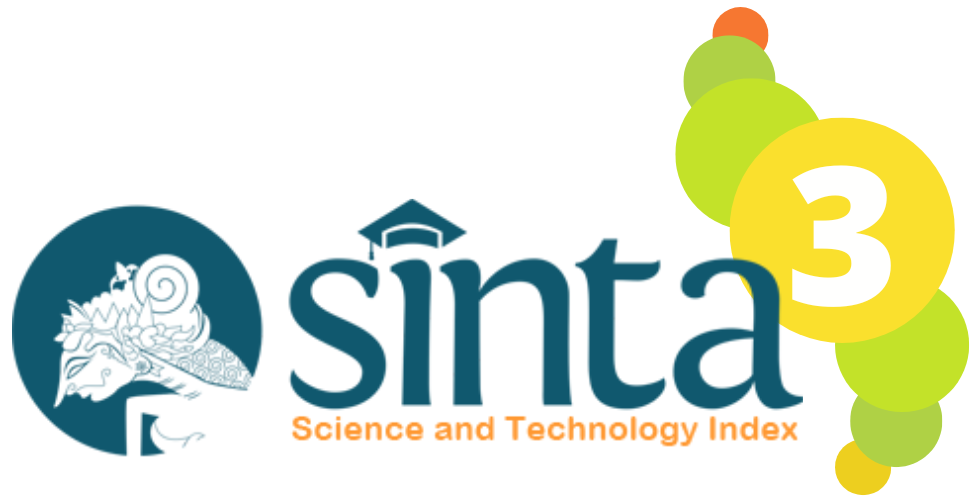APPLICATION OF THE ARIMA MODEL IN FORECASTING ETHEREUM PRICES
Abstract
Ethereum is one of the leading cryptocurrencies utilizing blockchain technology for peer-to-peer financial transactions. This study aims to forecast Ethereum's price using the Autoregressive Integrated Moving Average (ARIMA)model. Historical price data from January 1, 2023, to January 15, 2025, covering 534 periods, was analyzed. The ARIMA (0,1,9) model was selected based on AIC, SC, and Adjusted R-squared criteria, with forecast evaluation showing a Mean Absolute PercentageError (MAPE) of 15.01% and a Root Mean Squared Error (RMSE) of 649.702. Forecast results indicate an upward trend in Ethereum's price over the next 30 periods, with fluctuations being less pronounced compared to historical data. The study concludes that ARIMA provides reasonably accurate short-term predictions, although forecasting errors increase with longer prediction periods. These findings can serve as a reference for investors in developing short-term investment strategies for Ethereum.
Downloads
References
M. G. Solomon, Ethereum For Dummies. United States: Wiley, 2019.
I. Santo, Melangkah ke Dunia Cryptocurrency: Memulai Perjalanan Anda ke Investasi Digital di Indonesia. Bintang Semesta Media, 2023.
J. Meliza and D. Hastalona, Investasi di Pasar Cryptocurrency. Penerbit P4I, 2022.
A. Singh, P. Kumar, and S. Taneja, Algorithmic Approaches to Financial Technology: Forecasting, Trading, and Optimization. IGI Global, 2024.
F. Rojas, H. Pomares, I. Rojas, and O. Valenzuela, Theory and Applications of Time Series Analysis: Selected Contributions from ITISE 2018. Springer International Publishing, 2019.
A. Aryanusa and S. Zahara, “Analisis Prediksi Harga Bitcoin Menggunakan Metode ARIMA,” SUBMIT: Jurnal Ilmiah Teknologi Informasi Dan Sains, vol. 4, no. 1, pp. 15–18, 2024. doi: 10.36815/submit.v4i1.3339.
A. Azari, “Bitcoin price prediction: An ARIMA approach,” arXiv preprint arXiv:1904.05315, 2019.
S. M. Raju and A. M. Tarif, “Real-time prediction of BITCOIN price using machine learning techniques and public sentiment analysis,” arXiv preprint arXiv:2006.14473, 2020.
A. Listiani and D. Al Mahkya, “Peramalan Cryptocurrency dengan Autoregressive Integrated Moving Average (ARIMA) dan Risiko Kerugian dengan Value at Risk (VaR),” Journal of Science and Applicative Technology, vol. 6, no. 2, pp. 85–91, 2022.
M. Jayasankar, “Comparative Forecasting of Major Cryptocurrencies: An Empirical Study Using Four Timeseries Forecasting Models,” in Proc. Int. Conf. Financial Markets & Corporate Finance, Singapore: Springer Nature Singapore, July 2023, pp. 41–57.
K. Cortez, M. D. P. Rodríguez-García, and S. Mongrut, “Exchange market liquidity prediction with the K-nearest neighbor approach: Crypto vs. fiat currencies,” Mathematics, vol. 9, no. 1, p. 56, 2020.
P. Sharma and R. M. Pramila, “Price prediction of Ethereum using time series and deep learning techniques,” in Proc. Emerging Trends and Technologies on Intelligent Systems: ETTIS 2022, Singapore: Springer Nature Singapore, 2022, pp. 401–413.
D. L. John, S. Binnewies, and B. Stantic, “Cryptocurrency Price Prediction Algorithms: A Survey and Future Directions,” Forecasting, vol. 6, no. 3, pp. 637–671, 2024. doi: 10.3390/forecast6030034.
I. Apriansyah, “Penyebab Harga Ethereum (ETH) Naik: Didorong Upgrade Dencun dan ETF,” Bittime, 2024. [Online]. Available: https://support.bittime.com/hc/id/articles/9106221767055-Penyebab-Harga-Ethereum-ETH-Naik-Didorong-Upgrade-Dencun-dan-ETF. [Accessed: Jan. 25, 2025].
N. Liunardo, D. Gunawan, and N. Murniati, “Analisis Peramalan Nilai Ethereum Menggunakan Model Autoregressive Integrated Moving Average,” Accounting Progress, vol. 2, no. 2, pp. 49–61, 2024. doi: 10.70021/ap.v2i2.99.
S. G. Makridakis, S. C. Wheelwright, and R. J. Hyndman, Forecasting: Methods and Applications, 2nd ed. New York, NY: Wiley, 1997.
J. D. Cryer and K.-S. Chan, Time Series Analysis with Applications in R, 2nd ed. Berlin, Germany: Springer, 2008.
J. E. Hanke and D. W. Winchern, Business Forecasting, 8th ed. Fngwood, NJ: Cliffs Prentice Hall, 2005.
P. Chang, Y. Wang, and C. Liu, “The development of a weighted evolving fuzzy neural network for PCB sales forecasting,” Expert Systems with Applications, vol. 32, pp. 86–96, 2007. doi: 10.1016/j.eswa.2005.11.021.
D. C. Montgomery, C. L. Jennings, and M. Kulahci, Introduction to Time Series Analysis and Forecasting. Hoboken, NJ: Wiley, 2008.
J. Supranto, Statistik Teori dan Aplikasi, 7th ed. Jakarta, Indonesia: Penerbit Airlangga, 2008.
Copyright (c) 2025 Romario Desouza Daniel Mangiwa, Revina Siregar, Seli Delima Sari, Neli Agustina

This work is licensed under a Creative Commons Attribution-ShareAlike 4.0 International License.




















